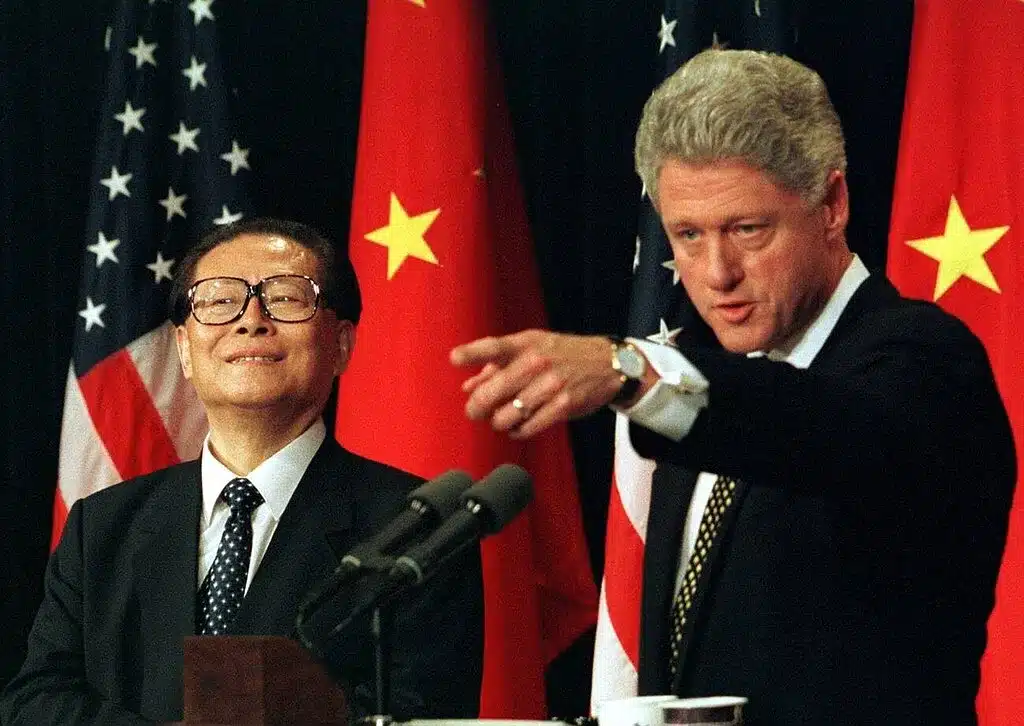A Tale of Misadventure on China’s Atomic Belt and Road
- Analysis
 Merlin Boone
Merlin Boone- 04/28/2022
- 0
Merlin Boone is a Special Operations military officer currently completing a PhD at the Princeton School of Public and International Affairs. Professionally, his experience includes operations in Syria and throughout the Asia Pacific. Merlin’s research interests include international political economy, political influence, and East Asian security relations. Merlin holds a M.A. in International Affairs from The University of Hong Kong and B.S. in Economics and Chinese from West Point.
Chinese leaders had pinned their hopes on breaking into the European energy market through a Chinese-led nuclear revolution. On February 7th, 2022, their vision seemed within reach as the United Kingdom’s Office of Nuclear Regulation approved a Chinese-designed nuclear reactor for future use in England and Europe. This approval also marked a key step in China’s Nuclear Belt and Road Initiative (BRI) to export nuclear reactors to over 25 countries worldwide. After an arduous five-year process, China and the leadership at China General Nuclear Power Corporation (CGN) had realized a critical milestone, achieving UK approval for the UKHRP1000 reactor and its future use throughout Europe. Moreover, this successful step would launch the internationalization of Chinese designed, built, and operated nuclear reactors.
This should have been an auspicious signal for the rapid expansion of China’s Nuclear BRI architecture. Instead, the exemplary technical achievement has been marred by British political controversy and broader concerns about geoeconomics and energy security. As such, China’s lofty nuclear ambitions on the Belt and Road Initiative came to an abrupt end in the chambers of British Parliament. Although the Chinese reactor received technical regulatory approval, the broader Chinese projects failed to pass Parliamentary scrutiny. In particular, Chinese funding and management of the projects has become highly contested and is at risk of failure.
This development occurred in tandem with a declining appetite worldwide for Chinese investment and broader security concerns about China’s BRI. In this case, China has failed to effectively leverage its oversized economic clout and technical prowess in nuclear development and reactor exports. Rather than earning access to the coveted European market, the approval of China’s homegrown nuclear reactor ended in a dramatic saga of foreign policy reversals and heated national security debates.
China’s Nuclear Ambitions
China’s modern rise from non-nuclear power in 1991 to a net nuclear reactor exporter has been an astounding transition. In less than thirty years, China built its first nuclear power plant and became a world leader in domestic nuclear capacity and reactor development. In contrast, Russia took over forty years to reach export maturity and U.S. nuclear reactor exports have long become unprofitable. Since entering the global nuclear power market, China has established its position and currently leads the world in new nuclear reactor construction.
In 2013, the Chinese Communist Party’s “Go Global” strategy marked China’s entrance into the overseas nuclear market. Since then, China has signed memoranda of understanding for Chinese nuclear investment and development or initiated projects with the following countries: Algeria, Argentina, Bangladesh, Brazil, Bulgaria, Cambodia, Czech Republic, Egypt, Ghana, Indonesia, Iran, Jordan, Kazakhstan, Kenya, Pakistan, Poland, Romania, Saudi Arabia, South Africa, Sudan, Thailand, Turkey, Uganda, UAE, United Kingdom. In sum, nearly 25 countries have signed or plan to sign agreements with China’s three national nuclear champions, CNNC, CGN, and SPIC. According to recent estimates, Chinese nuclear exports and investment seeks to obtain 20-30 percent market share [of the reactor market] among more than 40 BRI countries.
The Chinese Nuclear Dragon: A Myth?
Despite fears of Chinese market dominance and worldwide nuclear export hegemony, China has failed to effectively market and sell its reactors to key nuclear leaders. As it stands, China has signed agreements with ten of the top thirty nuclear producing countries; however, these countries only represent 4.2% of the world’s total nuclear energy production market. Furthermore, China has largely failed to transition from signing memorandums of understanding and cooperation frameworks to reactor construction; since 2015, aside from two early projects in Pakistan, China has yet to begin any new construction abroad. Accordingly, declarations of Chinese nuclear export dominance are unfounded. Despite Chinese technological developments, political overtures, and lenient funding conditions, China has failed to penetrate countries with strict nuclear regulations such as the United Kingdom, France, South Korea, Ukraine, Germany, Spain or Sweden (all members of the top eleven nuclear energy producers). This recent political failure in the U.K. has dimmed prospects for future Chinese-led nuclear projects in Britain and wider Europe.
Furthermore, this belated regulatory approval is a slap in the face to China’s Belt and Road Initiative and its domestic nuclear firms. While much of the original British concern surrounded technical and safety details, contemporary complaints have focused on energy security and a lack of trust in China. Here, the Chinese have earned technical approval but failed to maintain political support. To add insult to injury, Whitehall is also seeking to buy out Chinese financial interests and completely remove China from the nuclear energy equation. The U.K.’s strict regulatory approval process was a key crucible for China’s Nuclear Belt and Road. At this point, China’s technically-sound, and much touted, UKHRP1000 reactor doesn’t seem to have any buyers. For now, this development may mark the end of China’s quest to build a Chinese-led nuclear order.







